This was published 2 years ago
The CIA has built a museum but don’t expect them to let you in
By Gillian Brockell
Washington: The CIA Museum covers the intelligence agency’s long history – from spying on the Soviets to the Argo mission in Iran – but the latest addition is practically ripped from the headlines: a model of Ayman al-Zawahiri’s compound in Kabul used weeks earlier to plan the US drone strike that killed the al-Qaeda leader.
The model is part of the newly renovated exhibition hall located deep inside CIA headquarters in Langley, Virginia. Like the NSA’s Wall of Spies museum in Bethesda, Maryland, the CIA Museum isn’t open to the public. But it’s not exactly top secret either, welcoming CIA employees, official guests, foreign partners, potential recruits – and, early on a Saturday morning, a handful of carefully observed reporters with old-school notepads and pens (electronics are banned).
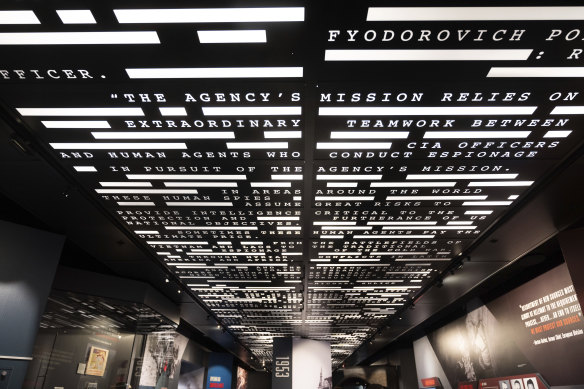
Codes adorn a ceiling in the Central Intelligence Agency’s refurbished museum.Credit: AP
There are plenty of fun gadgets to see, like a polygraph machine in a briefcase and a communication device disguised as a tobacco pipe, used in the 1960s. When a user bit down on the pipe, sound travelled through their teeth and jawbone to the ear canal, allowing them to hear messages that no one around them could.
There’s a stack of red, green and yellow containers for a pneumatic tube system – like you might see at a bank drive-through – used for an interoffice message service before the advent of email. Different colours denoted different classification levels. There were “miles and miles” of tubes throughout CIA headquarters, according to Robert Byer, the director of the CIA Museum. The containers were also the perfect size for the transportation of a can of beer, or, with a little manoeuvring, a sandwich, he added.
There’s an early example of the President’s Daily Brief, which used to be called the PICL (president’s intelligence checklist) or “pickle,” essentially a small spiral notepad, because that’s how President John F. Kennedy preferred to receive it. President Biden likes to have both hard copy and electronic tablet options for his daily briefing, Byer said, pointing to a leather-bound binder and tablet case. Reagan apparently preferred briefing by VHS tape.
Even the ceiling conveys the CIA’s mission. As you pass through it, overhead panels are decorated with Morse code, binary code, even a “modified” Kryptos, a code from 1991 that still hasn’t been fully cracked.
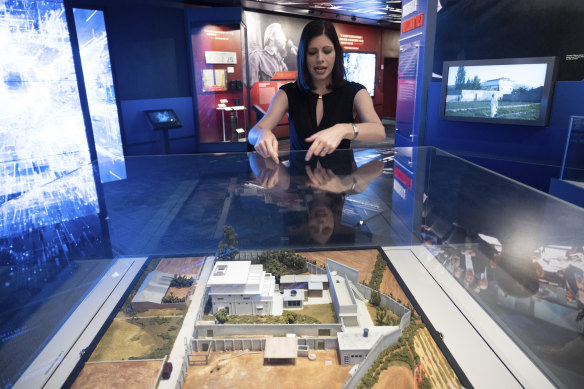
Deputy Director for the Museum in the Central Intelligence Agency Janelle Neises with a model of the compound where US forces located and killed Osama bin Laden in Abbottabad, Pakistan.Credit: AP
One display honours Soviet spies who helped the CIA, like Adolf Tolkachev, who shared weapons information that supposedly saved the US government a billion dollars, earning him the nickname “The Billion Dollar Spy,” and Oleg Penkovskiy, who provided information during the Cuban missile crisis that prevented nuclear war. He got the unbeatable nickname “The Spy Who Saved the World.”
“A lot of these spy stories don’t have happy endings,” one reporter said, noting the frequent mentions of imprisonment and execution. That’s true, Byer responded, but CIA employees need to see how important it is to protect their informants.
Other displays are dedicated to specific missions, like a recreation of a tunnel underneath the Berlin Wall that allowed the CIA to wiretap key East Germany officials. There’s plenty of Argo and Air America memorabilia, too.
Byer said his favourite part of the museum covered the Hughes Glomar Explorer mission, which, in 1974, sought to secretly recover a sunken Soviet submarine at the bottom of the Pacific Ocean via a very big mechanical claw. The mission was only partially successful – part of the giant claw broke off and dropped a chunk of the sub – but when the LA Times learned of the mission and tried to confirm it, the now-ubiquitous “Glomar Response” was born, which starts, “The CIA can neither confirm nor deny ...”
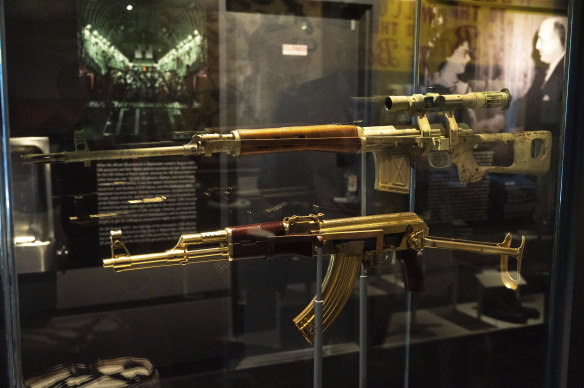
A gold AK-47 that belonged to Saddam Hussein along with an Iraqi sniper rifle is on display at the Central Intelligence Agency headquarters building’s refurbished museum.Credit: AP
Other things museum officials can neither confirm or deny: How much the renovation cost, what the codes on the ceiling say, or even how they acquired some of the artefacts.
Take for example, the bricks. There are real bricks displayed throughout from East Berlin, the “Hanoi Hilton” where Americans were tortured during the Vietnam War and Osama bin Laden’s compound in Abbottabad, Pakistan. How were all those bricks acquired?
Later, Byer said.
How much later? As part of another mission, or was there a whole entire CIA mission to get a brick for a museum?
“That’s classified,” Byer said. He can neither confirm nor deny ...
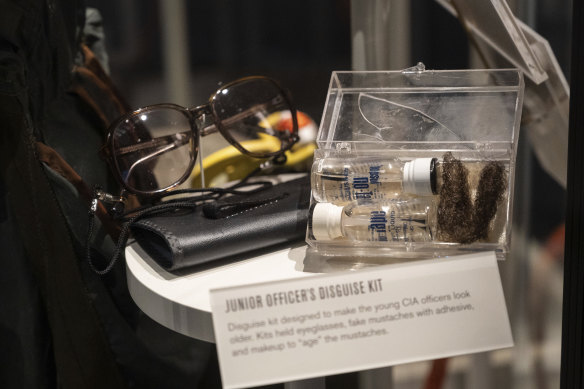
A junior officer disguise kit is on display at the CIA museum.Credit: AP
The museum doesn’t shy away from some of CIA’s failures, like a “dragonfly drone” that couldn’t handle a soft breeze, or a one-shot pistol meant to airdropped by the thousands for foreign allies. President Jimmy Carter ultimately nixed the program, deciding a bunch more guns indiscriminately dropped into a war zone would not actually be helpful.
It also explores how “groupthink” at the agency led to the assumption that Saddam Hussein had weapons of mass destruction, an intelligence failure that led to the Iraq War.
Even with that frank assessment, there are whole sections of unflattering CIA history missing from the showcase. The entire African continent does not appear to be mentioned, let alone CIA’s purported involvement in the 1961 assassination of Congolese prime minister Patrice Lumumba, the 1962 arrest of South Africa’s Nelson Mandela or the 1970s Angolan Civil War, among others.
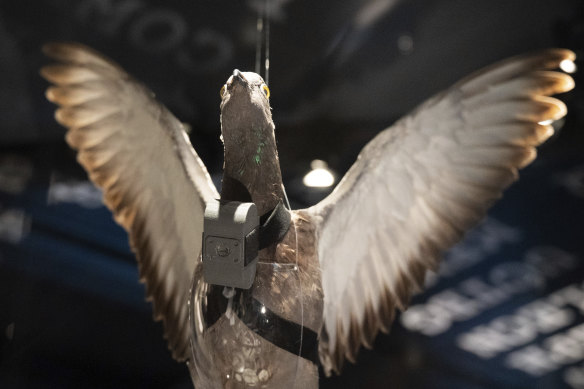
A mockup of a pigeon with a camera attached on display at the museum.Credit: AP
Waterboarding also did not appear to be mentioned.
A CIA spokeswoman did not immediately respond to a follow-up email about the lack of waterboarding mentions.
If you’re in the Washington area and want to snag one of those “official guest” invites, don’t bother asking your White House connection or that neighbour who works in intelligence. The museum is “operational,” Byer said, meaning if you don’t have a useful reason to see it, sorry, you can’t.
But many of the items displayed – the pigeon camera, the fake dead rat used for “dead drops” – can also be found across the river at Washington’s less-than-secret International Spy Museum.
The Washington Post